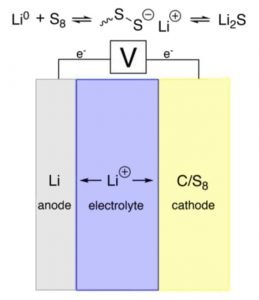
IBM’s quantum computer is helping Daimler AG, maker of Mercedes-Benz, produce better electric vehicles.
According to a research blog post from IBM, the main problem with electric vehicles is the capacity and speed-of-charging of their batteries. Batteries don’t charge fast enough and they don’t give electric vehicles the range that manufacturers would like. IBM thinks there’s a quantum solution.
“A quantum computing breakthrough by researchers at IBM and Daimler AG, the parent company of Mercedes-Benz, could help tackle this challenge,” researcher Jeannette Garcia writes. “We used a quantum computer to model the dipole moment of three lithium-containing molecules, which brings us one step closer to the next-generation lithium sulfur (Li-S) batteries that would be more powerful, longer lasting and cheaper than today’s widely used lithium ion batteries.”
The molecular world is very complex and, therefore, hard to simulate on classical computers. However, the team used a quantum computer to help with what might be a breakthrough simulation.


The researchers first evaluated the energies and dipole moments of all four molecules as we varied the atomic distance between the different atoms in the molecule (breaking the chemical bonds) using Qiskit. The IBM Q Valencia device then calculated the dipole moments of LiH (and simulated the other three) to understand the electronic distribution in a molecule across its different atoms as bonds are broken.
“This is crucial – for instance, in the case of LiH, the dipole changes as the nuclei are separated, making the molecule change from being polar (ionic) to neutral,” Garcia writes.
Another advantage of using a quantum computer is these devices seem better at exploring the quantum weirdness of properties, such as quantum entanglement.
She writes, “Also, while the molecular bonds are stretched, the molecular system must be described by a highly “entangled” state; entanglement is a property of quantum mechanics, according to which when one particle changes its state, so does its entangled ‘partner,’ simultaneously.”
The researcher explained that quantum computers are not yet better than classical computers. Outside disturbances can knock the fragile qubits out of quantum states that are needed to run meaningful computations. So, they verified the results using a few methods.
“To make sure our calculations on the hardware were accurate, we also performed them on a classical computer using the IBM quantum simulator,” Garcia writes. “Then, we ran these calculations on IBM Q Valencia, and compared the results. Despite working with noisy qubits, we were still able to extract sufficiently precise results.”
The work also suggests that the power of quantum computers to simulate the very small, the very complex and the very weird might help out in other fields.
“Simulating molecules is extremely difficult but modeling them precisely is crucial to discover new drugs and materials,” Garcia writes.

















